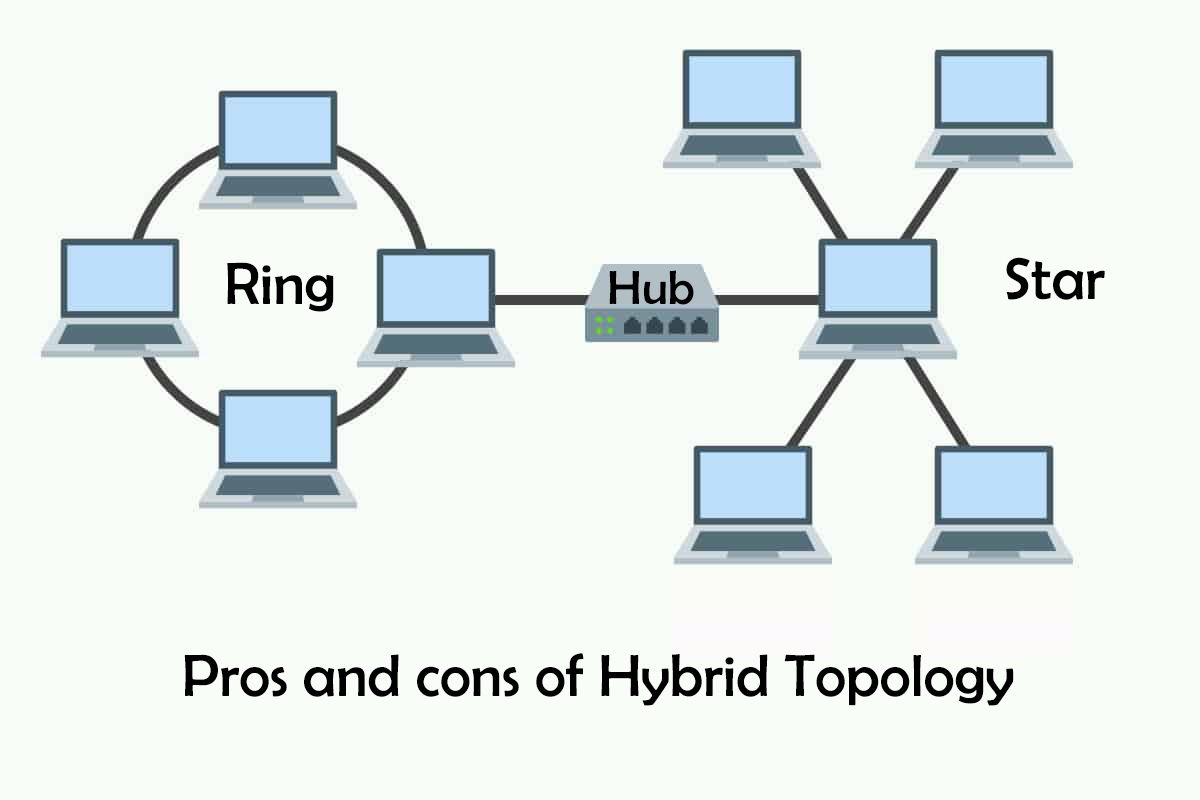
Advantages and disadvantages of hybrid topology
Definition of hybrid topology “A type of topology which is built by connecting two or more different topologies.” For example, the arrangement of computers in an office makes ring topology. And in another office computers are attached in the form of star topology. So if you connect these two offices i.e. combining ring and star topology will make a hybrid topology. You can combine various topologies that include:- [...]
Definition of hybrid topology
“A type of topology which is built by connecting two or more different topologies.”
For example, the arrangement of computers in an office makes ring topology. And in another office computers are attached in the form of star topology. So if you connect these two offices i.e. combining ring and star topology will make a hybrid topology.

You can combine various topologies that include:-
- Bus topology
- Ring topology
- Star topology
- Mesh topology
If you connect two or more topologies then the resulting hybrid topology will have attributes of the connected topologies.
The pros and cons of hybrid topology are explained below:-
Advantages of hybrid topology
Some features of hybrid topology are:-
Strong network: If any computer in the network fails to function then other computers in the network will not be affected.
Scalable: This type of network can be expanded without any problem. You just need an additional hub to connect the new topology to the existing network of topology.
Effective: End users can share their files from one office to another and the speed of data is also high in the network.
Combined features: When you connect two or more topologies then the resulting topology will get benefits from all the combined topologies.
Flexible: You can add and remove nodes from the network easily without any issue.
Reliable: if there occurs any error in the network then the error can be identified and fixes easily.
Large traffic: This topology can handle a large amount of data traffic. You will not face any traffic issue if you expand or collapse the network. You can make a large network easily.
Disadvantages of hybrid topology
Some drawbacks of hybrid topology are:-
Complex: As there are two or more topologies connected so the number of nodes increases also. This will make the network very large and handling all the issues in the nodes become difficult.
Costly: To connect different network topologies there is needed a special hub that can understand all the complexity of the different topologies. This type of special hub is costly.
A lot of cables: As the network grows, the number of cables required to connect also increases. It becomes difficult for a network technician to handle all the cables together.
Example of hybrid topology
- Different office branches can be connected
- Networking in a building
- Networking in school/university
- Hospital networking
Share this article
Written by : Junaid Rehman
I am a blogger and freelance web developer by profession. I love to blog and learn new things about programming and IT World.
Follow us
A quick overview of the topics covered in this article.
Latest articles
December 12, 2025
December 12, 2025
December 12, 2025
December 12, 2025
December 12, 2025









